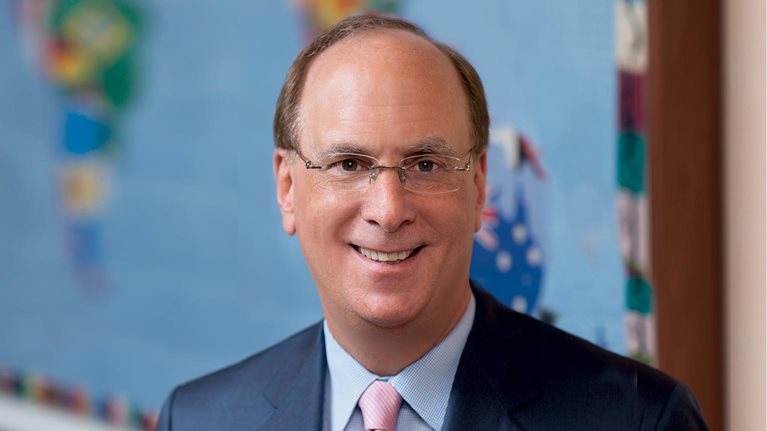How should organizations cope with climate change? As president and executive director of the Woods Hole Research Center, Dr. Philip Duffy has spent much of his career translating climate science for business leaders and policy makers and fostering awareness of how climate change affects society. His colleague, former investment manager Spencer Glendon, joined Woods Hole to explore the pressure that climate change places on the financial system. In these edited excerpts from two interviews, Duffy and Glendon discuss the unforeseen challenges our increasingly unstable climate creates for businesses and governments. “Folks don’t grasp the immediacy, the scope, and the scale of physical climate risk,” says Duffy.
What was unusual is now more normal
Spencer Glendon: What’s happened with the changing climate is that what’s usual is moving. The range of possible outcomes is extending. What was unusual before is now more normal. What was normal before happens less often. And what was unheard of happens some of the time. In statistical terms, the climate had a normal distribution that’s now shifting and flattening.
In lay terms, it means that what was a nice day happens less often, and what was an uncomfortable day happens more often, and what was a truly bizarre day happens somewhat frequently when it almost never happened before. In the last five years in Houston, they’ve had a couple of one-in-500-year events and a couple of one-in-100-year events. They haven’t had a period of time that didn’t have an unusual event.
Philip Duffy: Even on time horizons of 20 or 30 years, which isn’t very long, we see dramatic changes in risk. We see, for example, significant portions of the world becoming difficult to inhabit because of perpetual extreme heat and humidity and because of near-perpetual drought.
The whole region around the Mediterranean, in 20 or 30 years, could be headed toward near-perpetual drought. The Iberian Peninsula stands out as a hot spot. If you look at a map of Australia, the strips around the edge, which are the main parts of the continent that are inhabited, will also likely be in near-perpetual drought.
Planning horizons will shorten
Philip Duffy: Ten or 20 or 30 years may seem like long time horizons from a business perspective, but they’re not. Most people alive today will still be alive ten or 20 or 30 years from now. There are financial instruments that have 30-year time horizons—municipal bonds, home mortgages.
Spencer Glendon: Having an unstable climate means that planning horizons shorten. And when planning horizons shorten, the financial markets will shorten as well. You extend 30-year credit only if you believe you know a lot about the next 30 years. What I find amazing is the people who say that “we don’t know anything about the future” and then borrow for 30 years. Actually, they’re making an enormous number of assumptions about stability.
What I think will happen is that credit of all kinds will shorten in duration—and duration is going to go away in the marketplace. Now, that probably means that existing forms of long-duration credit are mispriced in a way that will cause their rates to rise because they include so much uncertainty.
Assessing physical climate risk
Philip Duffy: At the Woods Hole Research Center, we’ve initiated some relationships with corporations, and we’re showing them things that, from a scientific point of view, are quite rudimentary—maps of future risk, of different forms of extreme weather.
Mainly, physical climate risk isn’t on their radar screen. To the extent that folks are focused on climate risk, they’re thinking of regulatory risk and transition risk. Those are issues, and they’re closely tied to physical risk. But I think that folks don’t grasp the immediacy and the scope and the scale of physical climate risk.
Spencer Glendon: I think a climate-risk assessment for a corporation is likely to be a very healthy exercise because it takes the business operations out of just the two- dimensional and out of just the finance department and into the practical, physical attributes of whatever the operation is.
Suppose you’re running an internet business that seems totally virtual. Well, data servers are in a place, and electricity comes from a system. And, in many cases, those are outside of your control, and they have specific locational risk.
Watch out for ‘temporal mismatches’
Spencer Glendon: Look for where you are insured in a way that’s got a short time horizon. What assets do you have, or invest in, that someone else is bearing the risk for and that someone else has made no guarantee to you that they will bear it in perpetuity?
What I call temporal mismatches are when someone has made a commitment to 30 years for a mortgage, but it’s conditional on getting insurance that’s renewed annually. That 30-year mortgage is really a one-year mortgage that’s renewed by the insurance company—not by the mortgage company and not by the homeowner. So, you have a third party that can end that contract.
The world is full of those kinds of contracts that I think people in executive positions should be aware of. They rarely are.
The public sector has an important role
Philip Duffy: We’re looking at real estate in Florida. There’s academic literature that shows differential price trends for at-risk real estate versus real estate that’s not at risk. And where does that go? Those trends are going to increase. The differential is going to increase as the risk increases. That’s going to affect insurability. It’s going to affect the mortgage banking industry. It’s obviously going to affect property values.
The public sector has an important role to play through things like building codes, which make insurance tractable by allowing insurance companies to price policies in ways that reflect the true risk. It can also do things like preventing people from rebuilding for the fifth time in a flood zone. There should be synergies between the public and private sectors in the management of risk.




